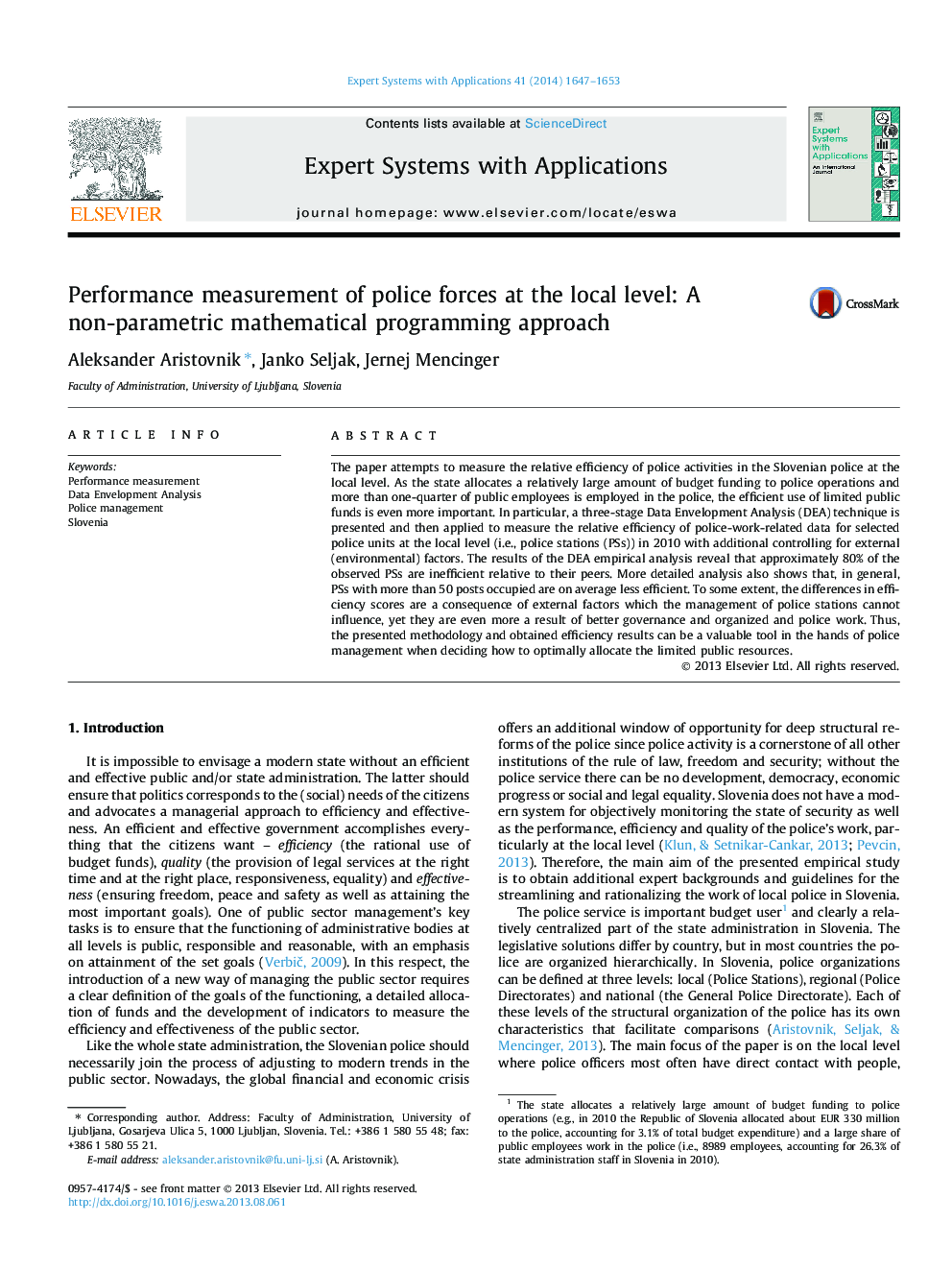| کد مقاله | کد نشریه | سال انتشار | مقاله انگلیسی | نسخه تمام متن |
|---|---|---|---|---|
| 382488 | 660765 | 2014 | 7 صفحه PDF | دانلود رایگان |
• A linear programming has been applied to access efficiency of police force.
• We provide additional insights into the efficiency of police work at the level of police stations.
• Most of the observed PSs are technically inefficient.
• External factors do affect police stations’ relative efficiency.
• Findings can serve as a guide for police management to enhance the performance.
The paper attempts to measure the relative efficiency of police activities in the Slovenian police at the local level. As the state allocates a relatively large amount of budget funding to police operations and more than one-quarter of public employees is employed in the police, the efficient use of limited public funds is even more important. In particular, a three-stage Data Envelopment Analysis (DEA) technique is presented and then applied to measure the relative efficiency of police-work-related data for selected police units at the local level (i.e., police stations (PSs)) in 2010 with additional controlling for external (environmental) factors. The results of the DEA empirical analysis reveal that approximately 80% of the observed PSs are inefficient relative to their peers. More detailed analysis also shows that, in general, PSs with more than 50 posts occupied are on average less efficient. To some extent, the differences in efficiency scores are a consequence of external factors which the management of police stations cannot influence, yet they are even more a result of better governance and organized and police work. Thus, the presented methodology and obtained efficiency results can be a valuable tool in the hands of police management when deciding how to optimally allocate the limited public resources.
Journal: Expert Systems with Applications - Volume 41, Issue 4, Part 2, March 2014, Pages 1647–1653
